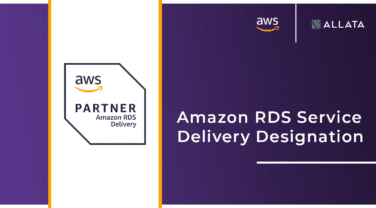Many businesses move on-premises applications to the cloud to improve performance and availability, and to reduce the cost of IT. The cloud also offers elasticity that on-premises data centers simply can’t match. As application demand spikes, a cloud infrastructure easily scales up. As application demand shrinks, the infrastructure contracts just as easily.
But to fully realize the benefits of the cloud, migrating an on-premises application needs to involve more than just a “lift and shift” process. Those that simply move their applications often experience sticker shock when they receive the bill at the end of the first month. They may also discover that the promises of performance, availability and scalability are not quite what they expected.
Applications refactored under microservices and/or API architectures may provide a good level of cloud integration. However, to be truly cloud-optimized, legacy applications need to be rearchitected for tighter integration with the cloud infrastructure layer to attain the highest level of performance, availability and cost-optimization.
Greater advantages can be realized by architecting in native services offered by the leading public cloud platform providers. For example, AWS has literally thousands of such services already built. Identifying these and architecting them into applications can reduce development and maintenance costs while also avoiding the reinventing of the wheel.
The Benefits of Re-Architecting Applications Through Refactoring
For some applications, a partial refactoring is necessary—where only a portion of the code changes. In other cases, a full refactoring is needed. Partial refactoring is a faster process, but the application will take advantage of only some cloud features. Full refactoring takes longer but utilizes every cloud service that’s available and pertinent to the application.
Some businesses choose not to re-architect at all because of the upfront cost and the delay in migrating to the cloud that takes place as software developers refactor the application. But over the long term, these businesses will pay more in cloud computing costs, and the end users of the application will experience more latency and reduced availability. If end-user frustration sets in, they may stop using the application altogether.
The process of re-architecting applications through refactoring is well worth the cost and effort, delivering several key benefits:
An example of how re-architecting applications gives you the where e-commerce applications and associated infrastructure can expand to meet a more extensive demand.
A key aspect of the re-architecting process is to analyze an on-premises application for its cloud-readiness. This will determine how much refactoring work needs to be done and helps you estimate the cost. That, together with the analysis of the infrastructure requirements and demand requirements, can provide a clear business case to bring the application to a cloud-ready state.
Every application is unique in what it will require. But whether you require partial or full refactoring, the reduction in long-term costs will easily outweigh the opportunity cost of not refactoring at all.
Going Beyond the Initial Cloud Migration
It’s important to work with a partner that can go beyond the migration process and also offer the ability to refactor both your applications and your cloud infrastructure. Once the initial refactoring process is completed, the applications will then just need the normal maintenance that any application would require.
In addition, to innovate faster and increase speed to market, automated release pipelines can be built to further leverage the cloud infrastructure and realize greater efficiencies during each application’s development lifecycle.
By refactoring applications so they are compatible and tightly-integrated with the cloud infrastructure, the applications can scale without any adjustments needing to be made to the cloud infrastructure. This includes eliminating the need to increase the size of databases and adding virtual servers. So when demand grows, you can provision more resources, and when demand diminishes, you can pull back to keep costs low. Both the applications and the infrastructure are elastic and work in sync with each other.
This serverless compute service runs your code in response to events and automatically manages the underlying compute resources. Lambda functions can also extend other AWS services with custom logic, or you can create your own back-end services that operate at AWS scale, performance and security.
Expertise Across the Entire Cloud Service Spectrum
If you’re looking for help in migrating and re-architecting your on-premises applications for the cloud in order to transform your workload, Allata can help. Our team features experts in cloud migrations, refactoring and maintenance to enable your applications to fully capitalize on cloud services.
We first identify the cloud services your applications will benefit from and then analyze if the current coding can fully utilize those services, or if the applications need to be refactored. Either way, the end results are applications that will fully optimize the available cloud services and keep your cloud costs as low as possible.



